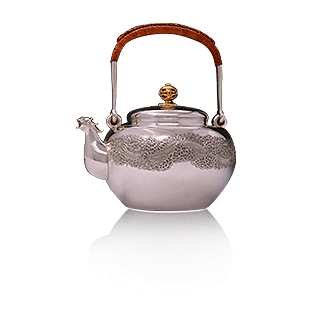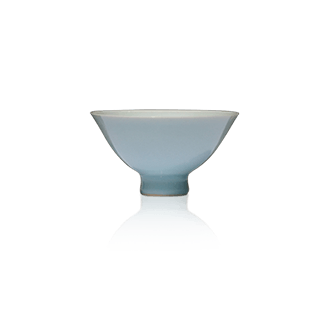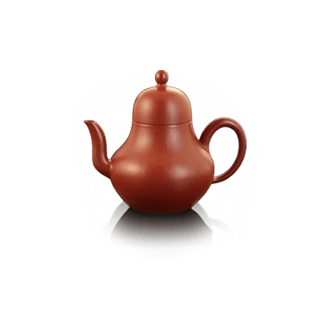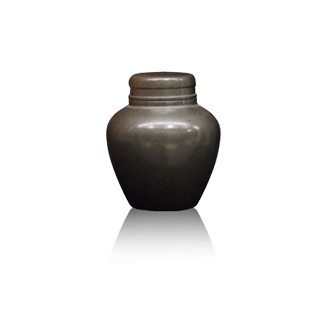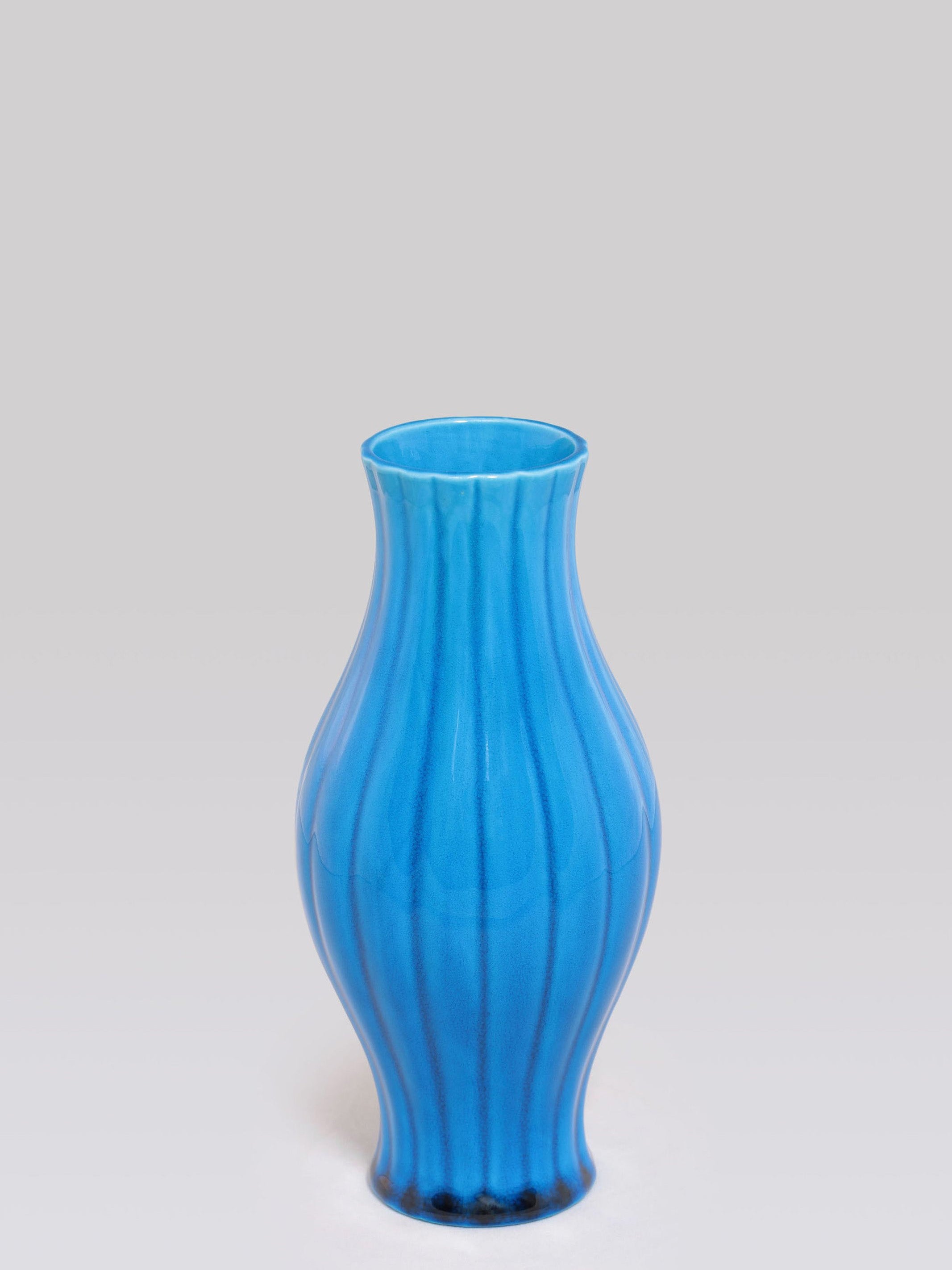
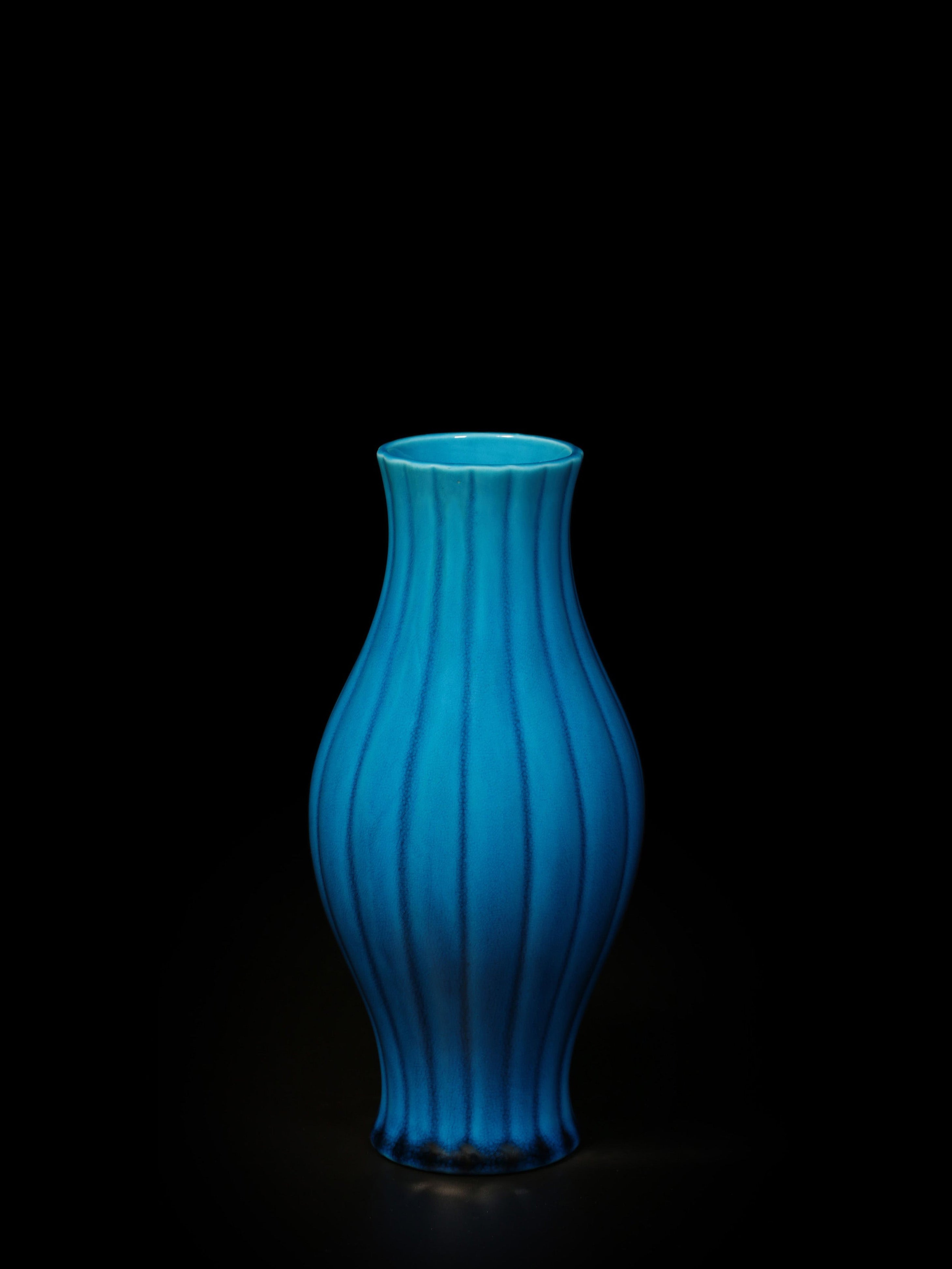
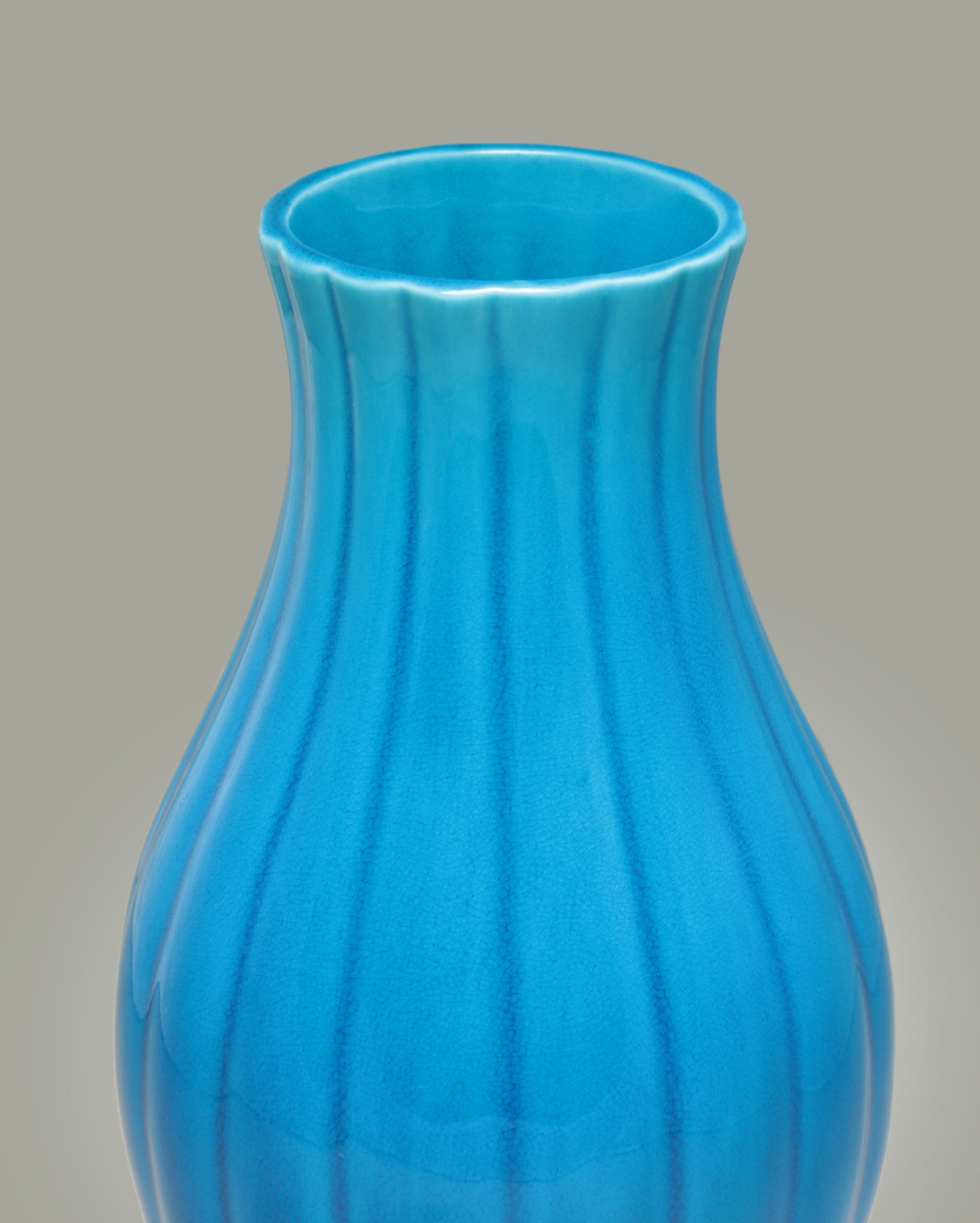
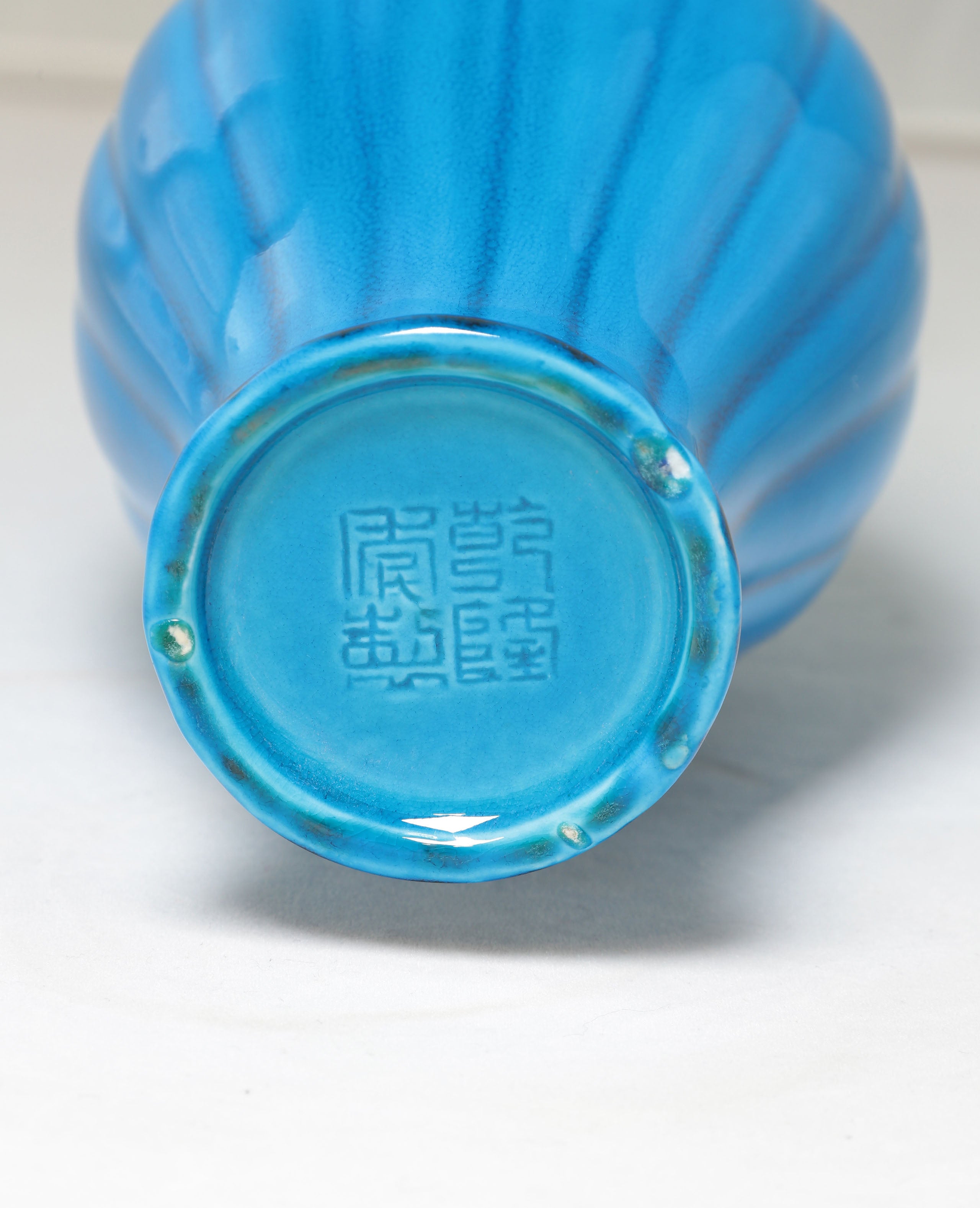


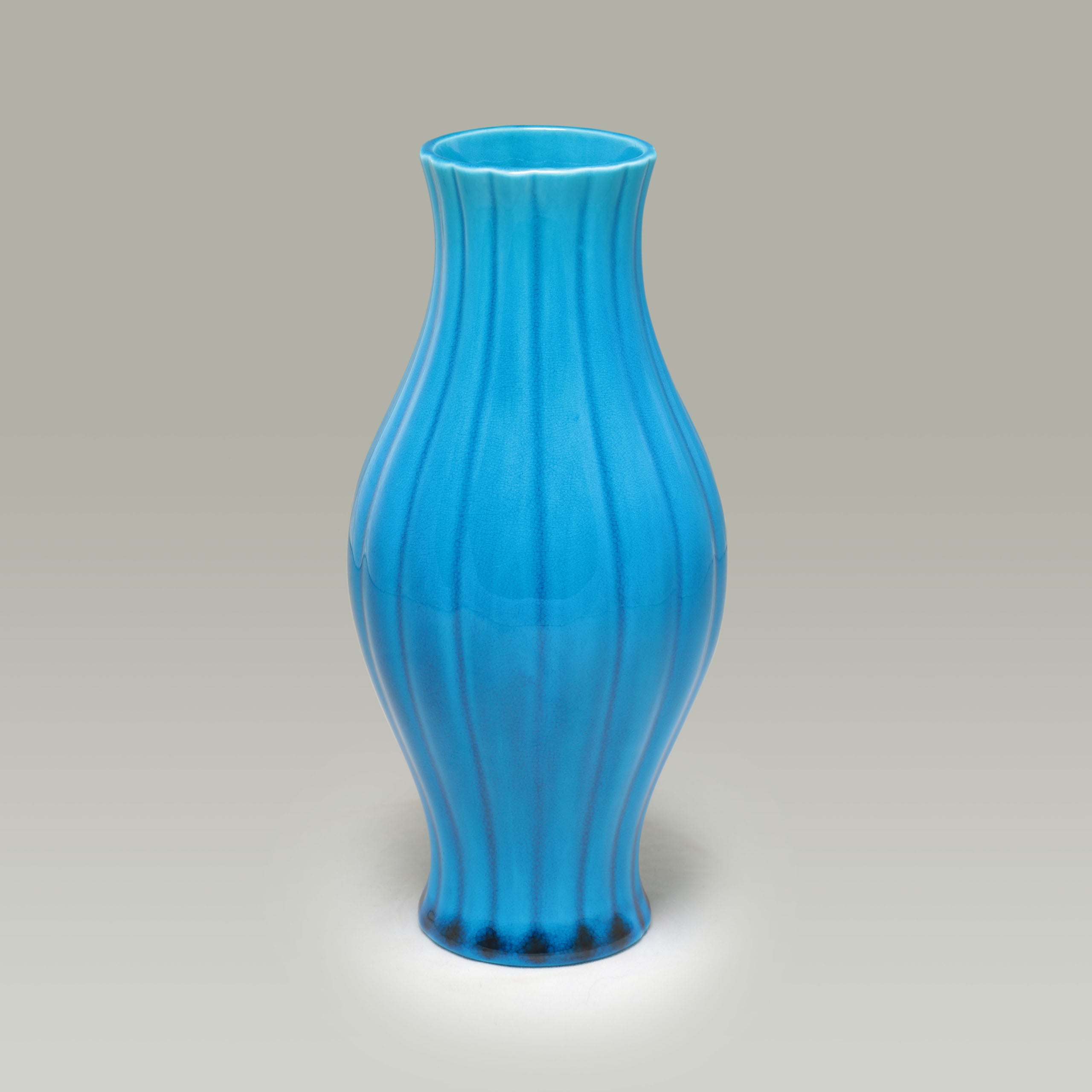
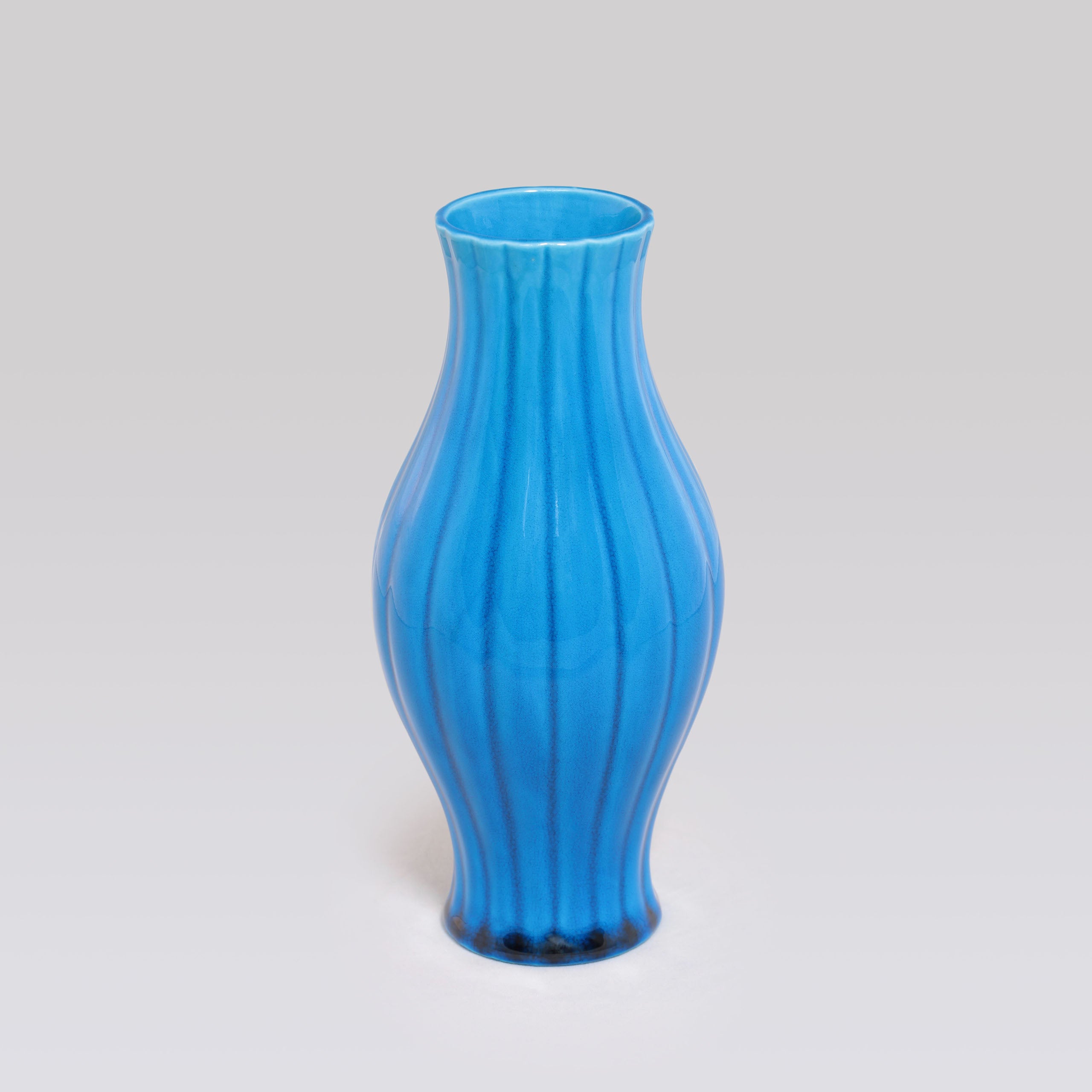

Peacock Blue Ribbed Bottle











Peacock Blue Ribbed Bottle
Peacock Blue Ribbed Bottle
Tu Jinghua, inheritor of the intangible cultural heritage of French emerald glaze preparation.
Peacock blue glaze is a beautiful colored glaze, named after peacock feathers. Glazes with a greenish tint are called peacock green, and those with a bluish tint are called peacock blue. It is also known as "peacock blue," "peacock green," "jade glaze," "French glaze," "French blue," and "auspicious glaze," among other names. Peacock blue glaze uses copper as a colorant and is a low-temperature glaze that produces a bright blue hue after firing. It boasts a gorgeous glaze, a rich variety of types, and further development led to the creation of decorative patterns, greatly enriching the variety of Chinese ceramics.
Pure and vast, the Silk Road shines brightly
"Peacock blue glaze" is a traditional glaze color from West Asia. Its products were brought to the Central Plains during trade exchanges in the Tang and Song dynasties and were successively produced in folk kilns during the Jin and Yuan dynasties. Judging from the craftsmanship of Jin and Yuan products, the turquoise blue ware of the Cizhou kiln system in the 13th century was of relatively high quality, and many exquisitely painted "turquoise blue with black flowers" pieces still exist today.
China began producing peacock blue glazed wares during the Song Dynasty. By the Tang Dynasty, Chinese peacock blue glaze had already been influenced by West Asia. According to current archaeological discoveries, the earliest known peacock blue glazed wares introduced to my country can be traced back to three peacock blue glazed pottery bottles unearthed from the tomb of Liu Hua of the Min Kingdom during the Five Dynasties period.
The three peacock-blue glazed pottery bottles unearthed from Liu Hua's tomb all have small mouths, long, bulging bellies, and small bases, resembling upright olives. The bottles are coated with a glaze between blue and green, with a relatively thick glaze layer; scholars refer to this glaze as "peacock blue glaze" or "peacock green glaze." Their origin is likely closely related to the developed overseas trade and transportation in southeastern coastal China at that time. During the Five Dynasties period of the Min Kingdom, rulers such as Wang Shenzhi actively promoted overseas trade, "attracting merchants from the foreign lands," resulting in bustling trading ports like Fuzhou and Quanzhou. The peacock-blue glazed pottery bottles unearthed from Liu Hua's tomb were likely imported into Fuzhou through the overseas trade channels of the time.
The three peacock-blue glazed pottery vases unearthed from Liu Hua's tomb shine brightly in the annals of history, telling the story of Fujian's glorious "Maritime Silk Road" thousands of years ago. These artifacts demonstrate that during the period when Chinese ceramics were extensively imported into Central and West Asia, a small number of foreign items also entered China.
Porcelain production flourished during the Xuande period of the Ming Dynasty, with significant advancements in peacock blue glaze. The strict requirements imposed by the rulers on the imperial kilns spurred the refinement of monochrome glazes and underglaze blue porcelain. Peacock blue imperial porcelain from the Ming Dynasty was extremely valuable even then, with few successful pieces. Those that have survived intact today are even rarer.
The Qing Dynasty blossomed with unparalleled beauty
The Qing Dynasty was the golden age of Chinese porcelain making, especially the early and middle periods, which represented the peak of Chinese ceramic history. The production of peacock blue glaze plummeted in the late Ming Dynasty, becoming extremely rare. However, during the Kangxi era, peacock blue glaze ware began to flourish again, gradually reaching another peak in its history.
The peacock blue glaze of the Kangxi period exhibited more variation in color than that of the Xuande and Chenghua periods of the Ming dynasty, ranging from deep, vibrant green to pale and pure. During the Yongzheng and Qianlong periods, the shapes and forms of peacock green glazed porcelain became even more diverse than those of the Kangxi era. From the mid-Qing dynasty onward, the porcelain industry gradually declined.
Quiet and noble, a darling of the collecting world
In its early stages, peacock blue porcelain was not produced in a wide variety of styles. However, as its color and the bonding between the glaze and the body were gradually mastered, its application in the ceramics industry became increasingly widespread. Based on the types of porcelain produced, we can roughly divide it into three categories: monochrome peacock blue glaze, peacock blue underglaze blue porcelain, and mixed-color porcelain related to peacock blue.
Among glaze colors, "peacock blue" is widely recognized as beautiful by collectors of antique ceramics; it's the color of a sky after rain. In 2004, a peacock blue porcelain plate from the Xuande period of the Ming Dynasty sold for HK$12.38 million. The fact that such a small piece of porcelain could fetch such a high price demonstrates the allure of its beautiful color to the collecting world. In 1989, at a Sotheby's auction, a Ming Xuande peacock blue glazed dish with an incised design sold for HK$3.74 million.
Peacock blue, as a member of the copper glaze family, is an intermediate color between reduction and oxidation atmospheres. Its development laid the foundation for porcelain makers to fully understand the chemical properties of copper, master other coloring techniques, and promote the creation of new glazes. In the nascent stage of polychrome porcelain before the Yuan Dynasty, peacock blue stood alone, playing an immeasurable role in the flourishing development of polychrome porcelain at that time. During the prosperous Ming and Qing Dynasties, it was integrated into monochrome glazes, blue and white porcelain, and polychrome porcelain in different roles, further contributing to the development of porcelain making.
Peacock blue glaze is a low-temperature glaze variety, and the glaze color is generally not very uniform. Upon close inspection, fine crackles can be seen everywhere. Tu Jinghua, an inheritor of the intangible cultural heritage of the preparation of peacock blue glaze, calls it "fish roe pattern." The local accumulation of glaze is as deep as the ocean, which is intriguing.
Born in 1969 into a ceramic family in Jingdezhen, Tu Jinghua is a representative inheritor of the Jingdezhen intangible cultural heritage—the preparation of Fa Cui glaze. He is also the only inheritor in Jingdezhen who has mastered the preparation, coloring, and firing techniques of medium-temperature Fa Cui glaze.
He began learning the craft from his father in 1987; in January 1989, he joined the Jingdezhen Sculpture Porcelain Factory; in 1996, the company underwent restructuring, and he independently established a ceramic studio specializing in medium-temperature jade glaze decoration materials, which he still runs today.
Apprenticeship: Grandfather Tu Yixin, a late ceramic glaze blending craftsman in Jingdezhen during the Republic of China era (later joined the Ceramic Research Institute of the Ministry of Light Industry);
Apprenticeship: Tu Jincai, father, a veteran craftsman at the Jingdezhen Sculpture Porcelain Factory;
Features:
1) It is made by hand-pouring glaze and adding colors directly onto the unglazed porcelain body and then firing it;
2) The glaze and body are tightly bonded, and the glaze contains fine crackles resembling fish roe.
3) The glaze is bright, thick, warm, elegant and clean, with a strong glassy texture, giving people a pleasing feeling.
Mid-temperature glaze decoration is mainly used for traditional porcelain. In recent years, while working on decorating traditional porcelain with mid-temperature glaze, Tu Jinghua has also been committed to promoting the combination of glaze and modern art porcelain, so that more people can understand glaze.
In 2014, the artwork "Chang'e Flying to the Moon" by Liu Yuanchang, a master of Chinese arts and crafts, was decorated. In the same year, it was also decorated with "The Dawn Ceremony" by Chen Peihuo, an inheritor of provincial intangible cultural heritage. The decorative effect of the colored glazes in the artworks received high praise and recognition from experts.
They also participated in the recording of the large-scale documentary "Craftsmanship in Pottery" about the 72 porcelain-making processes in Jingdezhen, which enabled more people to recognize and understand the medium-temperature jade glaze.
Tu Jinghua, inheritor of the intangible cultural heritage of French emerald glaze preparation.
Peacock blue glaze is a beautiful colored glaze, named after peacock feathers. Glazes with a greenish tint are called peacock green, and those with a bluish tint are called peacock blue. It is also known as "peacock blue," "peacock green," "jade glaze," "French glaze," "French blue," and "auspicious glaze," among other names. Peacock blue glaze uses copper as a colorant and is a low-temperature glaze that produces a bright blue hue after firing. It boasts a gorgeous glaze, a rich variety of types, and further development led to the creation of decorative patterns, greatly enriching the variety of Chinese ceramics.
Pure and vast, the Silk Road shines brightly
"Peacock blue glaze" is a traditional glaze color from West Asia. Its products were brought to the Central Plains during trade exchanges in the Tang and Song dynasties and were successively produced in folk kilns during the Jin and Yuan dynasties. Judging from the craftsmanship of Jin and Yuan products, the turquoise blue ware of the Cizhou kiln system in the 13th century was of relatively high quality, and many exquisitely painted "turquoise blue with black flowers" pieces still exist today.
China began producing peacock blue glazed wares during the Song Dynasty. By the Tang Dynasty, Chinese peacock blue glaze had already been influenced by West Asia. According to current archaeological discoveries, the earliest known peacock blue glazed wares introduced to my country can be traced back to three peacock blue glazed pottery bottles unearthed from the tomb of Liu Hua of the Min Kingdom during the Five Dynasties period.
The three peacock-blue glazed pottery bottles unearthed from Liu Hua's tomb all have small mouths, long, bulging bellies, and small bases, resembling upright olives. The bottles are coated with a glaze between blue and green, with a relatively thick glaze layer; scholars refer to this glaze as "peacock blue glaze" or "peacock green glaze." Their origin is likely closely related to the developed overseas trade and transportation in southeastern coastal China at that time. During the Five Dynasties period of the Min Kingdom, rulers such as Wang Shenzhi actively promoted overseas trade, "attracting merchants from the foreign lands," resulting in bustling trading ports like Fuzhou and Quanzhou. The peacock-blue glazed pottery bottles unearthed from Liu Hua's tomb were likely imported into Fuzhou through the overseas trade channels of the time.
The three peacock-blue glazed pottery vases unearthed from Liu Hua's tomb shine brightly in the annals of history, telling the story of Fujian's glorious "Maritime Silk Road" thousands of years ago. These artifacts demonstrate that during the period when Chinese ceramics were extensively imported into Central and West Asia, a small number of foreign items also entered China.
Porcelain production flourished during the Xuande period of the Ming Dynasty, with significant advancements in peacock blue glaze. The strict requirements imposed by the rulers on the imperial kilns spurred the refinement of monochrome glazes and underglaze blue porcelain. Peacock blue imperial porcelain from the Ming Dynasty was extremely valuable even then, with few successful pieces. Those that have survived intact today are even rarer.
The Qing Dynasty blossomed with unparalleled beauty
The Qing Dynasty was the golden age of Chinese porcelain making, especially the early and middle periods, which represented the peak of Chinese ceramic history. The production of peacock blue glaze plummeted in the late Ming Dynasty, becoming extremely rare. However, during the Kangxi era, peacock blue glaze ware began to flourish again, gradually reaching another peak in its history.
The peacock blue glaze of the Kangxi period exhibited more variation in color than that of the Xuande and Chenghua periods of the Ming dynasty, ranging from deep, vibrant green to pale and pure. During the Yongzheng and Qianlong periods, the shapes and forms of peacock green glazed porcelain became even more diverse than those of the Kangxi era. From the mid-Qing dynasty onward, the porcelain industry gradually declined.
Quiet and noble, a darling of the collecting world
In its early stages, peacock blue porcelain was not produced in a wide variety of styles. However, as its color and the bonding between the glaze and the body were gradually mastered, its application in the ceramics industry became increasingly widespread. Based on the types of porcelain produced, we can roughly divide it into three categories: monochrome peacock blue glaze, peacock blue underglaze blue porcelain, and mixed-color porcelain related to peacock blue.
Among glaze colors, "peacock blue" is widely recognized as beautiful by collectors of antique ceramics; it's the color of a sky after rain. In 2004, a peacock blue porcelain plate from the Xuande period of the Ming Dynasty sold for HK$12.38 million. The fact that such a small piece of porcelain could fetch such a high price demonstrates the allure of its beautiful color to the collecting world. In 1989, at a Sotheby's auction, a Ming Xuande peacock blue glazed dish with an incised design sold for HK$3.74 million.
Peacock blue, as a member of the copper glaze family, is an intermediate color between reduction and oxidation atmospheres. Its development laid the foundation for porcelain makers to fully understand the chemical properties of copper, master other coloring techniques, and promote the creation of new glazes. In the nascent stage of polychrome porcelain before the Yuan Dynasty, peacock blue stood alone, playing an immeasurable role in the flourishing development of polychrome porcelain at that time. During the prosperous Ming and Qing Dynasties, it was integrated into monochrome glazes, blue and white porcelain, and polychrome porcelain in different roles, further contributing to the development of porcelain making.
Peacock blue glaze is a low-temperature glaze variety, and the glaze color is generally not very uniform. Upon close inspection, fine crackles can be seen everywhere. Tu Jinghua, an inheritor of the intangible cultural heritage of the preparation of peacock blue glaze, calls it "fish roe pattern." The local accumulation of glaze is as deep as the ocean, which is intriguing.
Born in 1969 into a ceramic family in Jingdezhen, Tu Jinghua is a representative inheritor of the Jingdezhen intangible cultural heritage—the preparation of Fa Cui glaze. He is also the only inheritor in Jingdezhen who has mastered the preparation, coloring, and firing techniques of medium-temperature Fa Cui glaze.
He began learning the craft from his father in 1987; in January 1989, he joined the Jingdezhen Sculpture Porcelain Factory; in 1996, the company underwent restructuring, and he independently established a ceramic studio specializing in medium-temperature jade glaze decoration materials, which he still runs today.
Apprenticeship: Grandfather Tu Yixin, a late ceramic glaze blending craftsman in Jingdezhen during the Republic of China era (later joined the Ceramic Research Institute of the Ministry of Light Industry);
Apprenticeship: Tu Jincai, father, a veteran craftsman at the Jingdezhen Sculpture Porcelain Factory;
Features:
1) It is made by hand-pouring glaze and adding colors directly onto the unglazed porcelain body and then firing it;
2) The glaze and body are tightly bonded, and the glaze contains fine crackles resembling fish roe.
3) The glaze is bright, thick, warm, elegant and clean, with a strong glassy texture, giving people a pleasing feeling.
Mid-temperature glaze decoration is mainly used for traditional porcelain. In recent years, while working on decorating traditional porcelain with mid-temperature glaze, Tu Jinghua has also been committed to promoting the combination of glaze and modern art porcelain, so that more people can understand glaze.
In 2014, the artwork "Chang'e Flying to the Moon" by Liu Yuanchang, a master of Chinese arts and crafts, was decorated. In the same year, it was also decorated with "The Dawn Ceremony" by Chen Peihuo, an inheritor of provincial intangible cultural heritage. The decorative effect of the colored glazes in the artworks received high praise and recognition from experts.
They also participated in the recording of the large-scale documentary "Craftsmanship in Pottery" about the 72 porcelain-making processes in Jingdezhen, which enabled more people to recognize and understand the medium-temperature jade glaze.









Frequently asked questions
Use the FAQ section to answer your customers' most frequent questions.
Order
Yes, we ship all over the world. Shipping costs will apply, and will be added at checkout. We run discounts and promotions all year, so stay tuned for exclusive deals.
It depends on where you are. Orders processed here will take 5-7 business days to arrive. Overseas deliveries can take anywhere from 7-16 days. Delivery details will be provided in your confirmation email.
You can contact us through our contact page! We will be happy to assist you.





